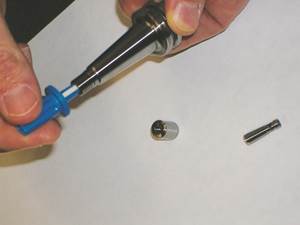5 Ideas for Continuous Improvement
These suggestions for manufacturing process improvements are based on Kaizen ideas that call for never-ending improvement from the entire organization.
“Continuous Improvement (CI) of the people and processes under my authority” is the fourth point of my internal compass. The Kaizen concept is usually explained to Americans as meaning “improvement.” While this simplification overlooks the role of maintenance and standardization in the Japanese implementation of Kaizen, it can be understood that a major component of Kaizen strategy is the call for never-ending efforts for improvement that involves everyone in the organization—managers and workers alike.

Here are five ideas to help you understand whether your organization is focused on continuous improvement or suffering from continuous pain because of a lack of a process for generating progress and improvement.
5) It’s about the process, NOT the results. If you concentrate on nurturing the process, the results will come as a natural consequence. Everyone has processes and every process can be improved. Unintended variation in our processes leads to undesirable variation in the outcomes of our processes.
The proper continuous improvement focus is to simplify our processes to reduce or eliminate these potential variations. This is what makes lean manufacturing and 5-S successful—the elimination of unwanted variation.
4) Frozen practices versus “Freedom with Fences.” At least part of the current malaise in Detroit these days is a consequence of the major OEMs’ insistence on frozen practices. They are simultaneously demanding cost reductions from “savings” that their frozen practice procurement systems are structurally designed to prevent.
“Freedom with Fences” is a term used at Harley-Davidson. It enables employees to understand both the limits and the latitude they have to make improvements in their work processes while protecting their downstream customers. Would your people say that you are a “freedom” company or a “fences” company? Or, would they say that you, like Harley-Davidson, are a “Freedom with Fences” company? What will you do about it?
3) Have the courage to take risks. Thomas Edison had countless failures in his work to find the ideal filament material for the incandescent light. Yet, he looked at each of those failures as “lessons that taught us what won’t work” rather than as failed experiments.
There will always be risks associated with change. There are no guarantees. But there are inevitable long-term risks to avoiding change as well. One can intelligently manage risk through the use of facts and data.

Who has access to facts and data in your shop? Do they know that failure is survivable? An organization that is truly committed to continuous improvement is filled with people who are comfortable with learning from what doesn’t work. An organization where people are afraid of consequences will never be successful at continuous improvement.
2) Continuous improvement is a process. Processes have owners. Owners are empowered to maintain and improve that which they own. Who owns continuous improvement in your business? Who owns continuous improvement in your shop? Who owns continuous improvement in your chip-spinning department? What evidence exists to show that all employees are working on continuous improvement?
1) Every day, some kind of improvement should be made somewhere in your company. Many small, incremental improvements over time will out-achieve a few large “breakthrough” projects over the long run. They will also be easier to sustain and will probably cost less, too. Do you know where the last continuous improvement idea was implemented in your company? Do you know when? Did you congratulate the team that implemented it? Why or why not?

Continuous improvement is synonymous with progress. Without continuous improvement, there can be no progress, only decline as the rest of the world continues its drive to better/faster/cheaper.
Continuous improvement is the engine that drives our economy through improved customer satisfaction, reduced variability, reduced waste and higher profits. The above ideas for continuous improvement ought to give you an indication of the status of continuous improvement in your company. It’s time to get to work.
Also read: ‘Five Questions for Continuous Improvement.”
Related Content
Understanding Micro-Milling Machine Technology
Micro-milling can be a companion process to turning-based production machining. This article looks at some of the technologies that go into a micro-milling machine and why they are important to successful operation.
Read MoreMetalworking Fluid Management and Best Practices
Cutting metal is a complex process involving many critical factors to be successful. Correctly applied metalworking fluids, including oils or coolant, is one of these critical factors.
Read MoreMicro-Drilling: 9 Questions to Answer Before Beginning
Applications for micromachining continue to grow. Successful machining with small tools calls for a different set of process skills on the shop floor.
Read MoreTips for Troubleshooting and Repairing Chip Conveyors
A nonfunctioning chip conveyor can cause a high-production machine to be down for an extended period of time. Here is some troubleshooting advice if you’re having issues with your chip conveyors.
Read MoreRead Next
Video: Adopting Continuous Improvement as Company Culture
Continuous improvement is an ongoing investment into identifying opportunities for boosting efficiency and reducing waste. This article shares advice from machine shop managers to other machine shop managers about continuous improvement plans that have worked for their companies and the benefits they are enjoying as the fruits of their labor.
Read MoreMaintain to Improve
Continuous improvement begins with understanding and maintaining the capabilities of what we have. Deciding what to do as a business manager is a high-risk, low-reward activity.
Read MoreDo You Have Single Points of Failure?
Plans need to be in place before a catastrophic event occurs.
Read More











.jpg;maxWidth=300;quality=90)









